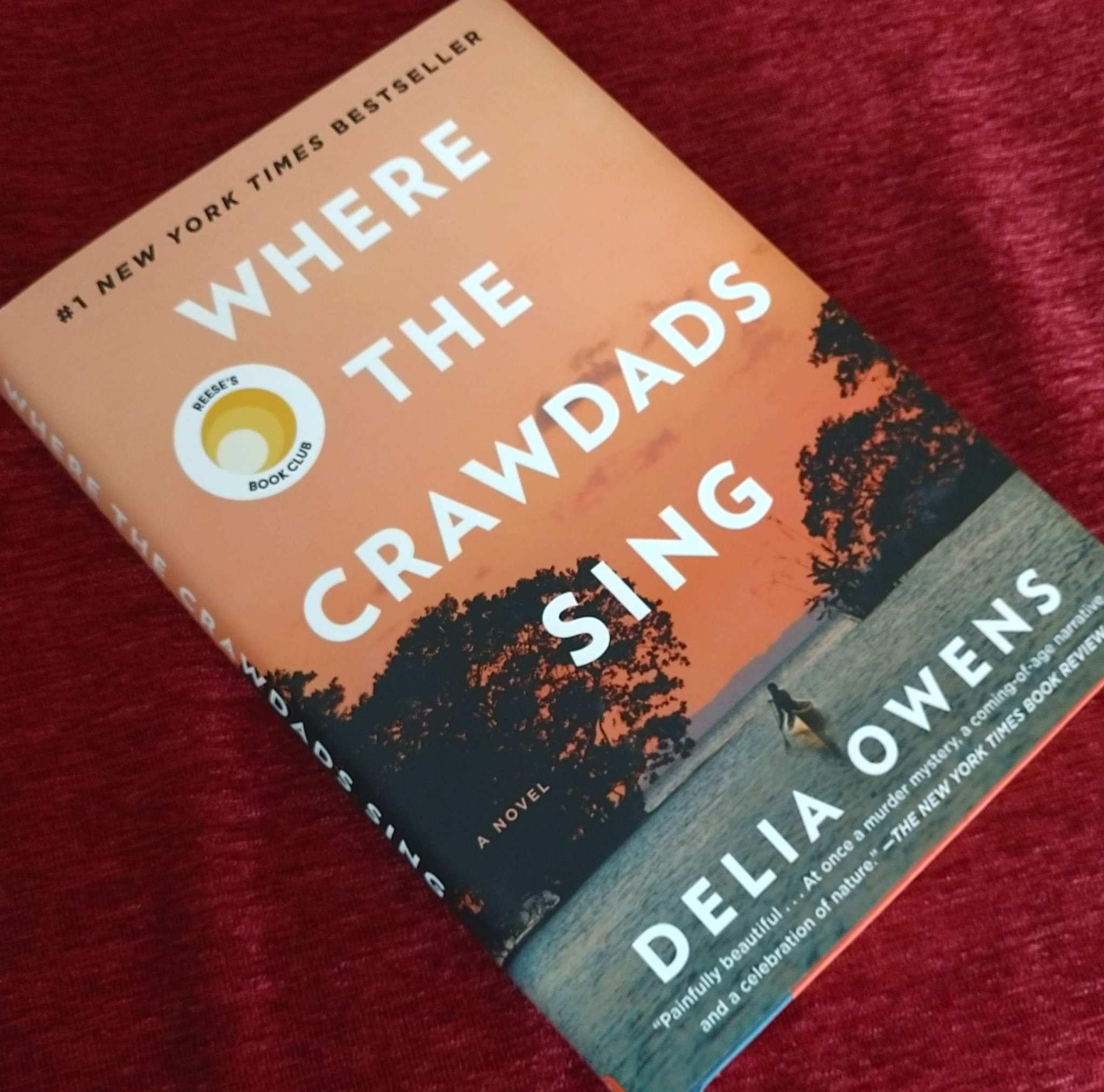 Delia Owens’ debut novel, Where the Crawdads Sing is one of my favorite reads of 2018.
Delia Owens’ debut novel, Where the Crawdads Sing is one of my favorite reads of 2018.
It is a romance, a family saga, a coming of age story, and a murder mystery rolled into one, often poetic, book. Owens writes from a remarkable understanding of nature. A quote from her website reads, “When you can feel the planet beneath your toes and trees moving about, you must listen with all your ears and,–I promise–you will hear the crawdads sing. In fact, it will be a chorus.”
This tells me much about the author and her debut novel. Owens spent over two decades studying wildlife in remote regions of Africa. As a result of this research, she makes the case that mammals in strongly bonded groups form those groups of exclusively females. In Where the Crawdads Sing, Kya is a female without a group and desperately wants one. Owens subtly makes the point that female bonding is in our DNA. Kya is abandoned by her biological mother, siblings and eventually her father. Her mother is the North Carolina marsh and her teachers are the animals that populate the marsh. Kya scrapes out a living and a huge education on the water’s edge, befriending rare and wonderful characters like Jumpin, the general store and gas station owner, and Tate, the young man and friend of Kya’s brother that teaches Kya to read. These people help her in her greatest times of trouble. Throughout the book, the characters are well-drawn and there are good and bad folk in equal measure. The marsh too, becomes a character as well as the town of Barkley Cove.
Not only does the author stay true to the theme of females forming groups but she speaks of predators and prey by Kya’s observation of those animals around her. The murder mystery carries this distinct theme along with many of Kya’s relationships. Kya speaks of the great blue heron as the color of gray mist reflecting in blue water. “And like mist, she can fade into the backdrop, all of her disappearing except the concentric circles of her lock-and-load eyes. She is a patient, solitary hunter, standing alone as long as it takes to snatch her prey.” The paragraph goes on to liken the heron to a predacious bridesmaid. it is chilling and gorgeous prose, speaking to the author’s clear understanding of nature.
Throughout the book, Kya’s understanding of nature and human frailty compelled me. In one passage, Kya can’t remember how to pray. She wants God to help bring back her mother’s garden, she wants God to bring back her mother. She struggles with her memory of prayer and faith and in the end finishes with, “Just forget it. No god’s gonna come to this garden.”
Later, when Kya reads her first sentence, she reads from Leopold’s A Sand Country Almanac, she reads the first telling sentence. “There are some who can live without wild things, and some who cannot.” Her friend tate who teaches her to read says there will never be a time when you can’t read. “It ain’t just that.” She spoke almost in a whisper. “I wadn’t aware that words could hold so much. I didn’t know a sentence could be so full.” I loved the double meaning hers. Kya cannot live without wild things. Kya is a wild thing, a great blue heron disappearing in the mist.
I read one review of this book that said the reader did not find Kya’s life believable and thus could never engage with the main character. I laughed with the reviewer because I too wondered at a young woman so isolated and yet able to make her way on tired grits and very little else. For me, this wasn’t a problem, but a wonder.
I enjoyed learning to survive with Kya, being mothered and taught by the marsh. I enjoyed her first taste of reading and thought back to my own, when black streaks and dots begin to reveal, not just words, but worlds.
If you haven’t read this book yet, I highly recommend it. I read it then re-read it because I hated to finish it.
Thanks for reading, and thanks for reading books. Bev
published in draft form at justonebeggar.net

 I am a mother, author, engineer, farmer, occasional actress, and incurable dog-sap. I think things and write things and embarrass myself often.
I am a mother, author, engineer, farmer, occasional actress, and incurable dog-sap. I think things and write things and embarrass myself often.